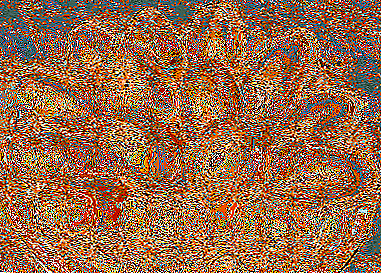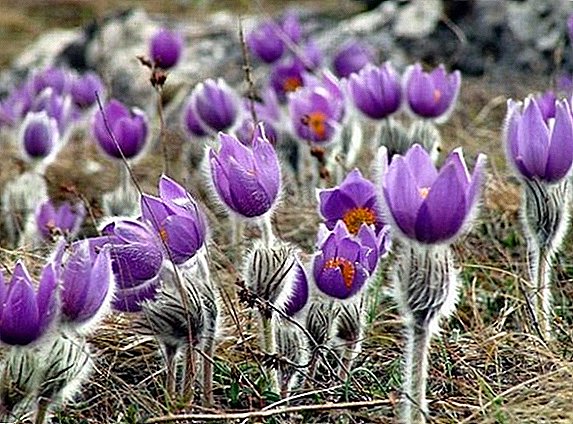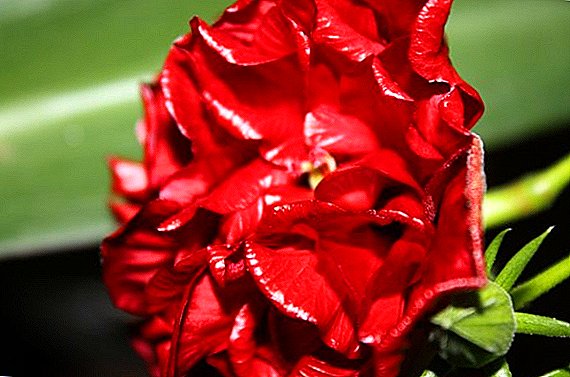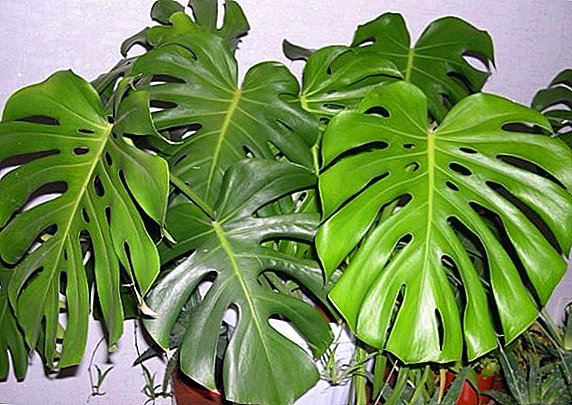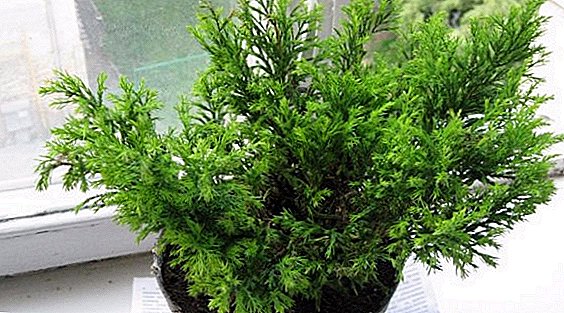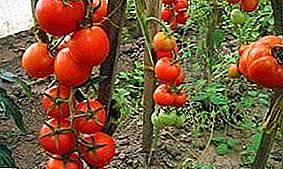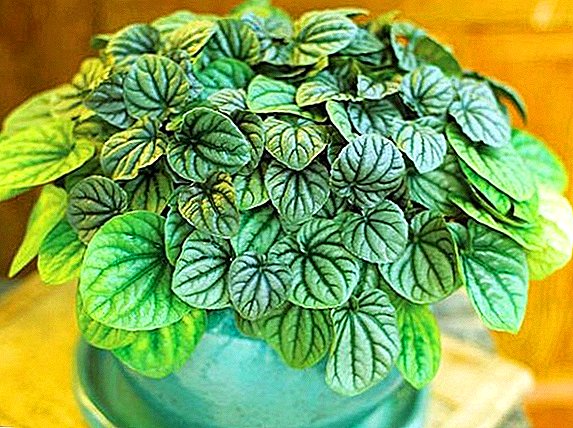 There is a category of flowers that almost everyone knows, but few know their name. It is to such indoor plants refers peperomia - a flower, which will be discussed further.
There is a category of flowers that almost everyone knows, but few know their name. It is to such indoor plants refers peperomia - a flower, which will be discussed further.
Did you know? The name of the plant comes from the Greek. peperi - "pepper" and homoios - "like".
Description of indoor plants
Peperomia is a herbaceous perennial plant of the Pepper family, whose native land is the tropics of America and India. Stems of peperomia are thick and fleshy. Depending on the species, there may be erect, hanging, lingering, sometimes creeping.
The leaves are also fleshy, capable of holding a considerable amount of moisture. The leaf plates are very diverse: dark green, golden, variegated with white strokes, olive or brown, glossy leathery, corrugated and even velvety, the shape is heart-shaped, lanceolate, round and obovate.
Like many plants with interesting leaves, peperomia blooms rather inconspicuously. White or greenish flowers are collected in long spikelike inflorescences. There are a huge number of species, here are some of them that are grown at home:
- Peperomiya velvety - has upright dark red stems and velvety leaves with light veins.
- Corrugated border is a low-growth appearance with velvet wrinkled sheet plates assembled in rosettes and painted in a dark green color with a brown tinge.
- Round-leafed perperomy - a creeping plant with small, rounded leaves and reddish stems.
- Watermelon peperomia - leaves are similar in color to the peel of a watermelon.
- Peperomia is obtuse - has obovate dark green leafy plates.
- Perperomy silver - view with short stems and small leaf plates with silver stripes.






Did you know? According to Feng Shui, it is believed that peperomia can tame the explosive nature and ardent temper of a person. And the room in which the flower is located, gives a feeling of comfort.
Growth Conditions
Peperomia is a rather unpretentious plant in home care, but some recommendations should be followed to grow a beautiful and healthy flower at home.
Unpretentious in home care plants are also: hibiscus, chlorophytum, cactus, zamiokulkas, spathiphyllum, sanseverra.
Lighting
It is necessary to select the lighting depending on the type of perperomy. Plants with a dark green color of leaf plates will suit the northern windows, and place species with more variegated leaves on the western or eastern windows. In any case, direct sunlight is best avoided - this may lead to wilting of the leaves. 
Temperature and humidity
Like other natives of the tropics, the peperomia flower is a heat-loving plant, badly tolerating drafts. In the warm season, the optimum temperature is around 22 ° C, in winter - not lower than 16 ° C. Peperomia, though coming from the rainy tropics, is not sensitive to air humidity. Although in the hot period, spraying will benefit the plant, especially species with delicate leaf plates.
Substrate and Planting Requirements
Peperomia requires loose, light soil. The following composition is recommended:
- sod land (part 1);
- garden land (part 1);
- humus (1 part);
- sand (0.5 parts).

Planting plants at home
At home, peperomia can be propagated in three ways:
- leaves;
- cuttings;
- division of the bush.
Leaves
For reproduction by leaf, choose a strong healthy leaf on a plant and cut it with a sharp knife, leaving a short petiole. Next, the sheet is placed in water, rooted in sphagnum or peat-sand mixture. For early rooting, you can equip the greenhouse. A month later, there will be enough roots to transplant in a permanent pot.
Cuttings
Similar to the first method, perennial propagated by cuttings (both stem and apical). Suitable cuttings, which have 1-3 nodes. For rooting use the above substrate only with the addition of humus. Capacity with cuttings set in a warm place (temperature about 25 ° C). 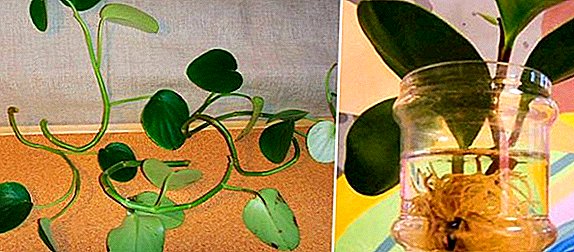
Other houseplants can also be propagated by cuttings: fittonia, arrowroot, tradescantia, fuchsia, philodendron, diploadiyeniya, korie.
Dividing bush
With spring transplantation of expanded peperia, reproduction can be easily carried out by dividing the shrub. This is the easiest and most common way. Sharing the bush should be carefully, without damaging the root system. Pots for new seedlings need to choose a little less than the one in which there was an adult flower.
How to care?
Peperomia care is standard and does not require much effort. Below is a list of necessary procedures for successful plant growth.
Features of watering at different times of the year
During the growing season in need of abundant watering. Suitable soft water, slightly warmer than room temperature. In autumn and winter, watering is significantly reduced, because excessive moisture can lead to rotting of the roots.
Important! The wilting of the leaves indicates insufficient watering.
Plant nutrition
Fertilizers are applied during the period of active growth and flowering, i.e. in spring and summer, twice a month. Suitable complex mineral fertilizers for decorative leafy plants.
Flower transplant
Young plants under three years old are recommended annual transplantation, adult flowers are transplanted as the root system grows. The need for transplantation is determined by the roots: if they peep from the drainage hole, then the pot is already small. 
Difficulties in growing
Flower growers may encounter some problems when growing peperomia. Below we give the main ones with the reasons and solutions.
- In winter, leaves fall: the wrong temperature.
- Brown leaf tips: this is how a flower reacts to drafts or a sharp drop in temperature.
- The sheet plates hang, and then fall: insufficient watering.
- Shriveled and sluggish leaves in the summer: an excess of light, the plant needs to be shaded.
- Faded and sluggish leaves in winter: excessive watering.
- Blackened petioles: excessive moisture, it is necessary to reduce watering.
Important! The main task in growing peperomia - Avoid excessive watering and monitor soil looseness.
In addition, the flower is prone to such pests as thrips, mealybug, spider mites, and scale insects. As a preventive measure, it is recommended to water the perperomy with soft, warm water. Also, the plant can catch the virus that causes dwarfism. It is better to remove such a flower so that it does not infect healthy individuals.
Having gathered different peperium varieties in your home greenhouse, you can arrange a colorful and diverse flower garden from just one type of plant.


